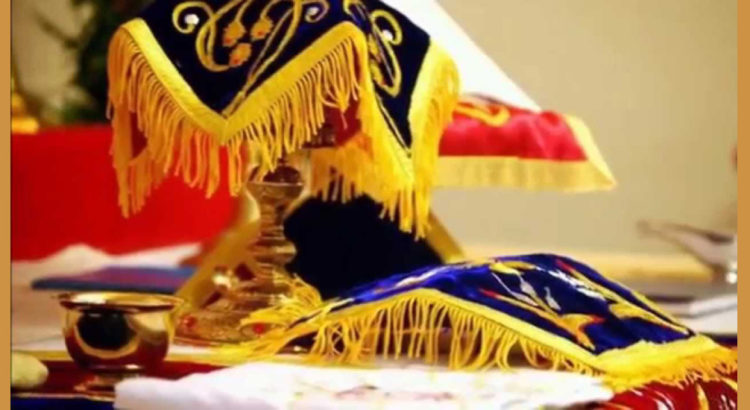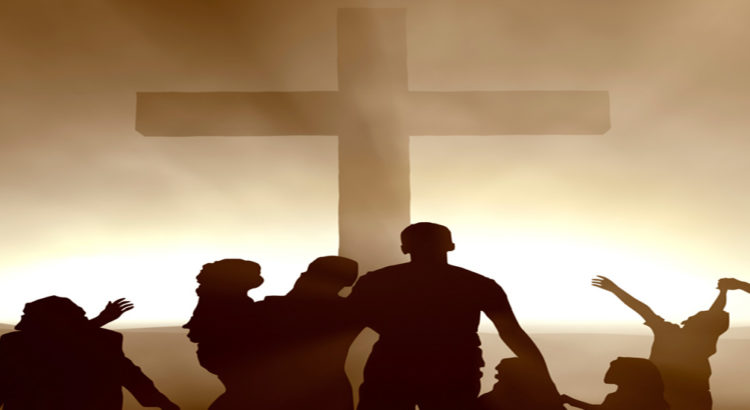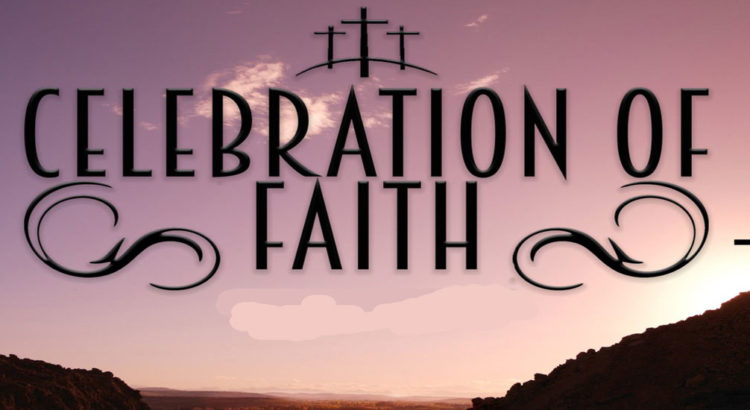Holy Spirit is at the centre of Eastern liturgical theology. Every celebration in the East is explicitly understood as a positive action of the Holy Spirit in the Church. The entire sacramental liturgy is centred on an appeal to the Holy spirit, who is asked to acquaint believers with the blessing of which Spirit made Christ the bearer at the resurrection (Romans 8: 11), so that it would be handed on by him to many.[1] St.Basil says, “Participation in liturgy, leads us to communion with the Holy Spirit; it is within the context of worship that Spirit bestows the knowledge of God.”[2] This Knowledge of God helps the Church to realize the Mission of God in this world. Thus the worshippers are anointed by the Holy Spirit for the work of the Kingdom of God. The Third person in the Trinity is always animating the Church and humanity as a whole.[3] The Spirit is in many ways the divine person closest to humans in the economy of God’s relations with them. It is only through the presence of the Holy Spirit a human person is able to know God and enter into the saving reality of God. Eduard Schweizer said, “Long before the Spirit was a theme of doctrine, the spirit was a fact in the experience of the Community.”[4] According to Eastern tradition the Church took its origin on the day of Pentecost.[5] St.John Chrysostam said, “Without the Spirit, there is no Church”.[6]
Epiclesis – Pneumatology of Liturgy
Epiclesis is the prayer which expresses the presence of the Holy Spirit. The literal meaning of epiclesis is calling upon or invocation. The invocation of Holy Spirit is the solemn affirmation that everything in life that which is positive and good is accomplished by the Spirit of God.[7] It is the prayer addressed to God to send/descend the Holy Spirit.[8] The Epicletic prayers denotes that Pentecost may be renewed and ever remain in the Church as a present reality and living experience. The work of the Holy Spirit is well explained in the Epicletic Prayers. The main ideas in the West Syrian Epiclesis are; the Spirit is consubstantial with the Father and the Son; the Spirit enlightens our minds to understand the depths of the divine Wisdom and by the dwelling of the Spirit we are made places of incessant worship.[9]
Epiclesis – Recalling Pentecost
Epiclesis is the time when the worshiping community is revivified of the presence of the Holy Spirit. It is a sign of the continuous experience in the participation of the divine life of Trinity through Holy Spirit. Thus an extended Pentecost is realized in the life of the Church. It is through the activation of the Holy Spirit that the Church lives and acts in this world. These prayers in our liturgy are both consecratory and communion epiclesis; consecratory in the sense that it appeals for the transformation of the bread and wine into Christ’s body and blood. Communion in the sense that it appeals for the sanctification of those who receive the mysteries on which Holy Spirit is called upon. Epicletic prayers are prayers for the re-enactment of Pentecost in the life of the Church. It is to be noted that the first Pentecost was experienced by Mary at the time of annunciation. This Pentecost celebrated in the womb of Mary was incarnative. Thus Epiclesis is to result in incarnation or deification. In other words the Prayer of Epiclesis is to make us perfect as God (Matt. 5:48). Besides that, by celebrating the Pentecost, the Church celebrates the mission of the Holy Spirit as the communication of new life, life divine to the humankind.
The descent of the Spirit which effects the consecration of the Bread and Wine, is often compared to the descent of fire. Fire is the symbol of Spirit In early Syriac literature . The aim of consuming fire is sanctification. This sanctification leads to incarnation, in other words deification. The mystery that occurred at the moment of the incarnation and the mystery that occurs at the epiclesis in the Eucharistic Liturgy are seen throughout all Syriac tradition as intimately connected.[10] Further it leads to the establishment of the church, as the priest prays for the communicants, so that they produce good fruits and deeds for the benefit of the Church, and for the soundness of their body, mind and soul. This is not for the wellbeing of the faithful and the Church, but to the very being of the church. The Spirit sanctifies the faithful, and thus confirms the Church.
The realization of Salvation in the church is in Holy Spirit. Jesus already fulfilled the economy of salvation in his earthly life by the salvific events, but the realization of salvation in each person is fulfilled by the coming of the Spirit. Epicletic prayers lead to this realization of salvation in the life of the Church. This salvation is to be made “contemporaneous” to be conceived by the Church. What Christ has once fulfilled and what is to be happened at the second coming of the Christ is made present to help us to experience is by Holy Spirit. Thus Holy Spirit makes “contemporaneous” the Christ event.[11] The mission of the Church is done upon this contemporarisation. The Church as a community of the new covenant confidently invokes the spirit, that it may be sanctified and renewed, led into all justice, truth and unity, and empowered to fulfill its mission in the world.[12]
Pentecost event is the celebration of the Holy Spirit in the life of the church. The same Spirit who was active throughout the salvation history was then poured out into the community of new covenant of God. It was the event which triggered the missionary church into action. The ‘Great Commission’ of Jesus derives its meaning and power wholly and exclusively from the Pentecost event. It is said that after Creation and Incarnation the outpouring of the Spirit is the third great work of God. The epiclesis as a prayer denotes that Pentecost may be renewed and may ever remain in the church as a present reality and living experience.
Epiclesis in the daily life of the faithful
The biblical and theological basis of the Epicletic prayers proves that the Epicletic prayers are not static expressions in liturgy. They are vibrant and rich in the potential they pose for the daily activation of the Church. Epicletic prayers are not only the summit of the sacramentaries but also the locus of ‘liturgy after liturgy’. Epicletic prayers are in fact the mission mandate being recalled in the daily life of the Church. Mission of the church is done through the ‘Epicletic life’ of the church. When the Church prays for the coming of the Spirit it is a call for the church to draw near, to open up to and become aware and activated by the Spirit. When the church prays epiclesis, the church is called back to the sacred duty of interceding for the world as the Spirit intercedes for us according to the will of God (Rom. 8:27) and witnesses with our spirit that we are God’s children (Rom. 8:16). Epicletic life of the church is a movement of the koinonia in vertical and horizontal directions. The church is to move towards God and at the same time to move towards the world. Through the Spirit the pneumatised human becomes a creator of life, justice and beauty and acquires authentic Christian liberty that of a human filled with the Spirit, who does not fear either life or death.
[1] Jean Marie Tillard, Blessing Sacramentalty and Epiclesis in David Power, Mary Collins ed. Blessing and Power (Edinburgh: T and T Clark Ltd, 1985), 102.
[2] George Mathew Kuttiyil, Liturgy for Our Times (Tiruvalla: CSS, 2006), 90.
[3] Paul Puthuva, Christology and Pneumatology in the writings of E. Schillebeeckx, Ephrem’s Theological Journal, (Vol. 12, No. 2, October 2008), 173.
[4] Veli-Matti Karkkainen, Pneumatology: The Holy Spirit in Ecumenical, International and Contextual Perspective, (Grand Rapids: Baker Academic, 2002),38.
[5] Joseph Kallarangatt, Pneumato centric Ecclessiology in Nikos Nissiotis, (Kottayam: OIRSI, 1999), 28.
[6] George Dragas, “Holy Spirit and Tradition: The Writings of St.Athanasius”, Sobornost,(Vol.1, No.1, 1979), 51.
[7] Thomas Hopko, The Orthodox Faith: An elementary Hand book on the Orthodox Church, (The Orthodox Church in America, 1972), 186.
[8] George Mathew Kuttiyil, Liturgy for Our Times (Tiruvalla: CSS, 2006), 92.
[9] Baby Varghese, West Syrian Liturgical Theology, (Hants: Ash Gate, 2004), 78.
[10] Sebastian Brock, The Holy Spirit in the Syrian Baptismal Tradition, (Piscataway: Gorgias Press, 2008), 86.
[11] Baby Varghese, Yakobinte Anaphora Suriyani sabhayil, (Kottayam: SEERI, 2002), 127.
[12] Baptism, Eucharist and Ministry, Faith and Order Paper No. 111, (Geneva: WCC), 17.




